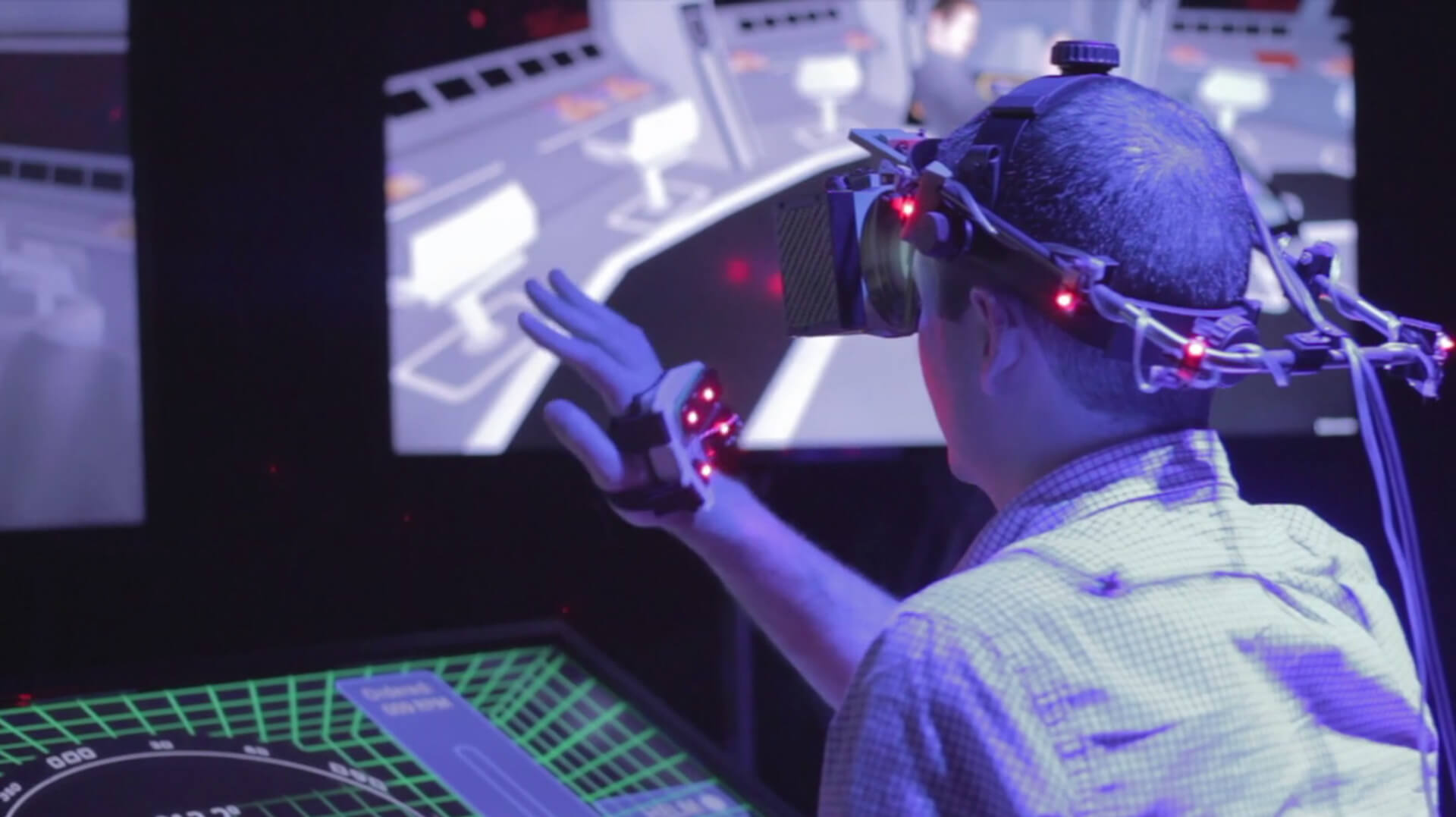Taking a Stand
Gamers beware. Evan Suma wants to get you off the couch.
The Department of Computer Science professor’s desire to propel people is so strong, he actually constructed a virtual reality escalator as part of his Ph.D. thesis. He’s also created free software using a Microsoft Kinect so that body movements, rather than keystrokes, can control play in video games like World of Warcraft. A 2010 video he made showcasing his sans-sofa software went viral.
But that is not all that is catching on.
Suma, a virtual reality researcher at the Mixed Reality Lab at the USC Institute for Creative Technologies, is leading a “movement toward movement” in game and virtual environments. With lighter, low-cost, low-energy VR devices (including the Oculus Rift, which has roots at the Mixed Reality Lab) and portable tracking technologies becoming a reality, Suma says it’s a trend whose time has come.
“There is a cognitive cost to using joysticks and sitting in front of a monitor that can prevent you from really feeling like you are in another place,” said Suma. “Moving around in a virtual environment is still an unsolved problem, but people are now paying attention in a way they have not before.”
Research has included putting people in giant hamster balls or having them walk on treadmills, but Suma’s work aims to let people move more naturally. As part of his doctoral dissertation at the University of North Carolina at Charlotte, Suma developed a technique called Change Blindness Redirection, which involves moving the location of doorways behind a person once they have entered a virtual room.
Suma’s perceptual trick — which turns a small physical space into an endless virtual one — caught the attention of Mark Bolas, a professor of interactive media in the USC School of Cinematic Arts and the director of ICT’s Mixed Reality Lab, who had also been conducting research in redirected walking. Suma joined Bolas’ group at USC and before long the team had people convinced they were traversing long hallways and going in and out of rooms, when in fact they were walking in a small circle in the lab. In studies of the technique, only one out of 77 participants perceived the perceptual illusion.
Current research efforts include exploring new ways of shape shifting, including compressing spaces and making hallways overlap so that each time someone enters a room it appears much larger than it could actually be.
“In the real world, space does not change, doors don’t move, rooms have to fit within a building’s physical dimensions,” said Suma. “In virtual reality, we can break the laws of physics and it turns out most people don’t notice. As designers, we can use that to our advantage to create more powerful experiences.”
Those experiences go beyond games. Suma’s work is funded by the U.S. Army Research Lab, which is interested in virtual reality training to replicate real-world conditions. Locomotion is an important aspect to simulating scenarios in which soldiers don’t sit, such as going out on patrols.
Suma, along with his Ph.D. student Mahdi Azmandian, is also investigating ways to allow for free exploration, where the walker is no longer constrained by paths, and where the computer can automatically change the environment as the user moves around. His future goal is to allow groups of people to roam simultaneously.
Suma is literally pushing the boundaries of how people interact in immersive environments. The steps he is taking — and studying — also represent great advances in the field of human–computer interaction, allowing for everything from more realistic virtual experiences, to gesture and body-based rehabilitation systems, to the ability to put one’s virtual self in an environment.
That’s right. Suma has contributed to technology that can put you directly in a game. Just don’t ask him to include your couch.




